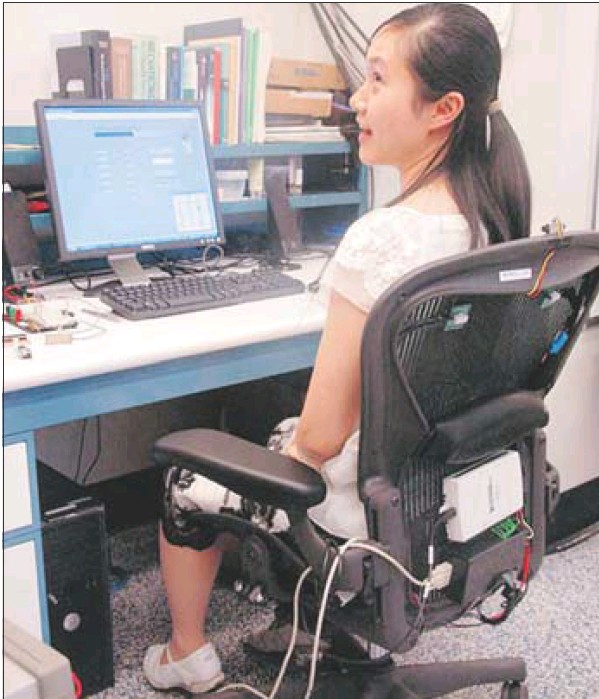A high-tech invention every mom would love
Misty Harris
Sun

Posture Feedback Chair: Matchbook-sized sensors detect when a person is slouching and respond with vibrating feedback.
In what you might call the mother of inventions, a new high-tech office chair nags whomever is in it to sit up straight.
Matchbook-sized sensors detect when a person is slouching and respond with vibrating feedback to the shoulders, back or legs.
Designed by the co-creator of the Segway, the Posture Feedback Chair is intended to act like a full-time ergonomics coach — not unlike bringing mom to work.
Though pester-power has long been leveraged to get people’s attention, from medication alarms to seatbelt alerts to the much-maligned Microsoft paper clip, the new chair takes nagging to a more ambient level.
“We want gentle coaching in a way that’s not disruptive,” says Yale University’s John Morrell, who co-created the chair with graduate student Jean Zheng.
“When you give people feedback in a localized way, it doesn’t take them as long to figure it out on their own. Feeling a buzz on your shoulder-blade will affect you on a much more subconscious level than if an annoying message flashed on a screen to say, ‘Move your shoulder back.’ “
The corrective chair, described by a design magazine as “Adderall for acute slouchers,” is still in its prototype phase, with Morrell admitting that the vibrations feel more “like a horsefly has landed on your back” than the nonintrusive feedback he ultimately envisions.
But response so far has been positive.
He’s applying a similar concept to drivers’ seats, with the vibrations acting as a tactile reminder of dangers on the road — a car in a person’s blind spot, for example.
With both inventions, the idea is not to outsource concentration but rather ingrain better habits.
“I’m a big fan of leveraging human capabilities as much as possible,” says Morrell, an assistant professor of mechanical engineering.
“We need tools that are more like coaches; things that help get you to a level of mastery instead of just doing it for you.”
The opposite philosophy is evident in technologies that do everything from parallel-park your car to automatically brake when a collision is imminent.
And though some, similar to Morrell, believe this stands to diminish the satisfaction of autonomy, others are all for it.
“The same argument — that you’re somehow taking away the joie de vivre of driving — could’ve been made about synchronized gearboxes and windshields,” says Dan Neil, a Pulitzer-winning automotive columnist for the Wall Street Journal.
“In the long run, the more people that have these new systems, the more cars will drive in a co-operative way and the more fuel-efficient traffic will be.”
Whether you’d prefer to be technologically nagged to behave a certain way or have the tech simply perform the task for you depends largely on a trait psychologists call “reactance.”
An estimated 20 to 25 per cent of the population is considered highly reactant, meaning that if you tell them to do one thing, they’ll do the other; about 25 per cent are low in reactance and thus cope well with being told what to do; the remainder fall somewhere in between.
“For non-reactant people, getting a reminder is fine and helpful and great,” says Gavan Fitzsimons, professor of marketing and psychology at Duke University in North Carolina.
“The trouble is when one of these products finds its way into the hands of someone like myself. I get a reminder that it’s time to brush my teeth or sit up straight and the last thing I want to do is brush my teeth or sit up straight.”
© Copyright (c) The Vancouver Sun
